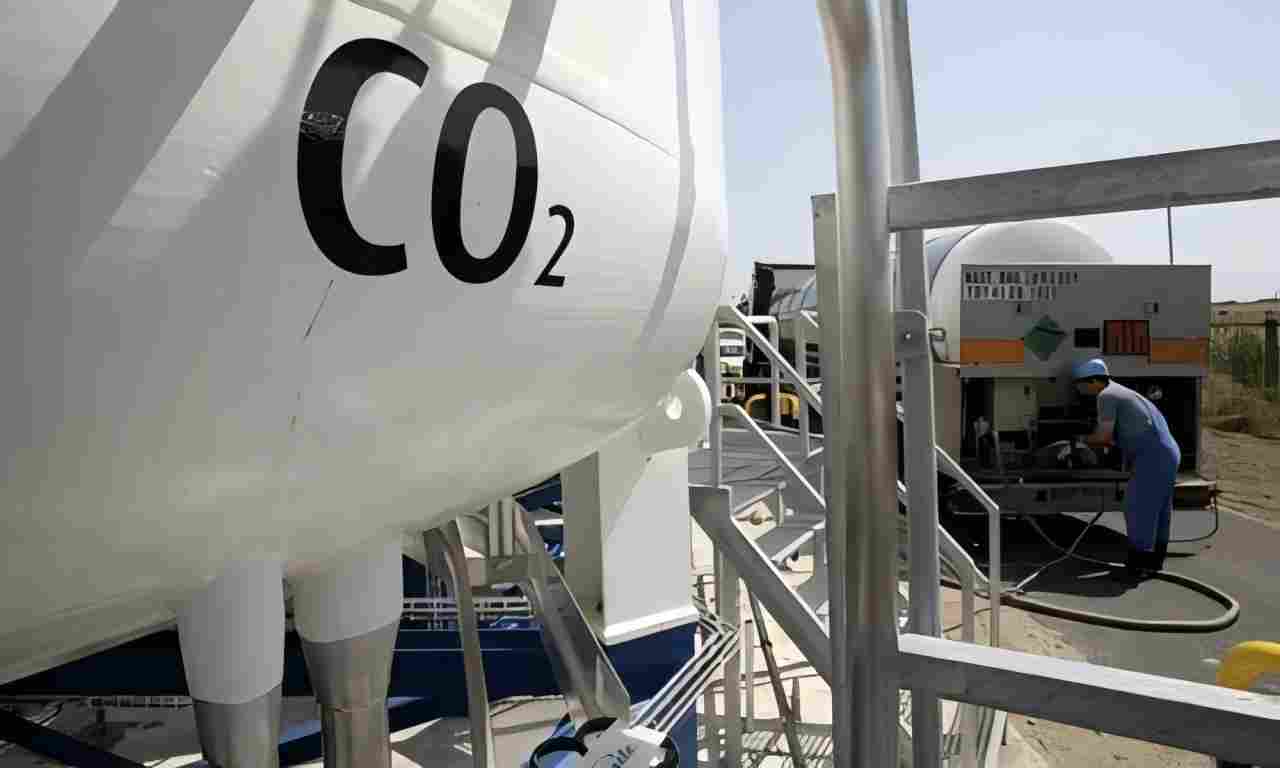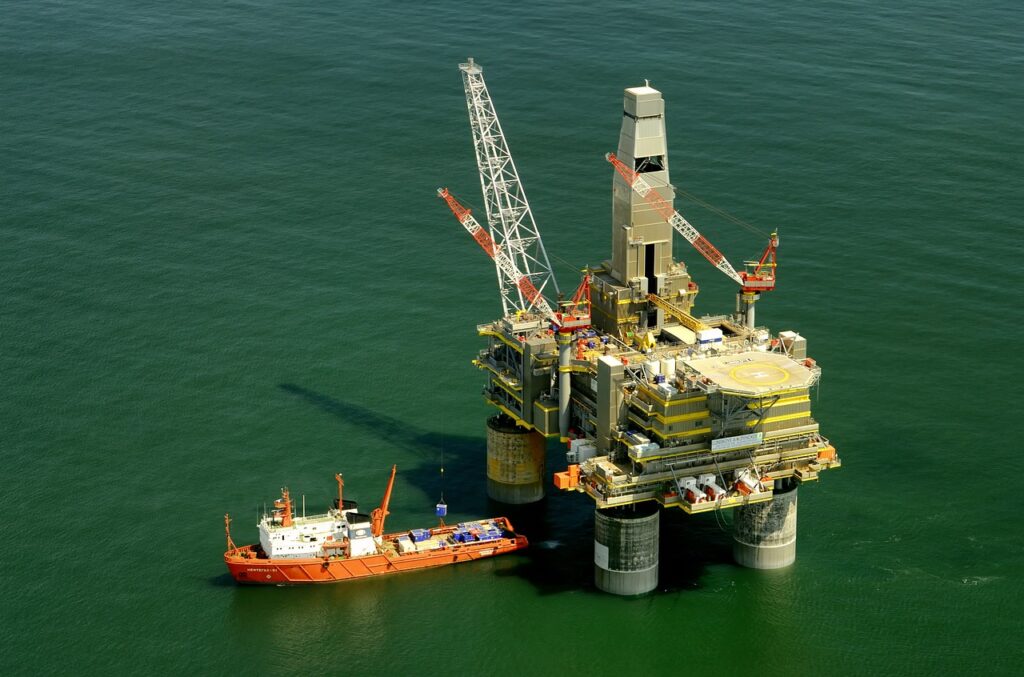Mandatory CO₂ storage policy breaks ground, fuels large-scale decarbonization, leads net-zero industrial shift
欧盟强制性二氧化碳封存政策破土而出,为大规模脱碳注入动力,引领净零工业转型
Introduction: From “Pilot Dilemma” to “Institutional Breakthrough”
For years, carbon capture and storage (CCS) has been regarded as a key technology for the EU to achieve its climate goals. However, its large-scale development has been struggling due to policy uncertainties, investment shortages, and the “chicken-and-egg” dilemma of disconnection between capture and storage supply and demand. In 2025, the EU introduced a landmark policy: mandatory development and reservation of a minimum CO₂ storage capacity by oil and gas companies by 2030. This groundbreaking regulation not only injects certainty into Europe’s CCS industry but also reshapes the global landscape of carbon dioxide removal (CDR) technologies.
引言:从 “试点困境” 到 “制度突破”
多年来,碳捕集与封存技术(CCS)一直被视为欧盟实现气候目标的关键技术。然而,由于政策不确定性、投资短缺,以及捕集与封存供需脱节的 “鸡生蛋还是蛋生鸡” 困境,其规模化发展举步维艰。2025 年,欧盟出台了一项具有里程碑意义的政策:要求油气企业到 2030 年必须开发并预留最低二氧化碳封存容量。这一开创性法规不仅为欧洲 CCS 产业注入了确定性,更重塑了全球二氧化碳移除(CDR)技术的发展格局。
A Vision for Growth: The Net-Zero Industry Act and Strategic Storage Mandates
The The Net-Zero Industry Act (NZIA), a cornerstone of the EU’s Green Deal Industrial Plan, represents a powerful commitment to bolstering European Union’s manufacturing prowess in key net-zero technologies, with CCS at the forefront. A central, motivating objective is the Union-wide goal of achieving at least 50 million tons of annual CO2 injection capacity by 2030. This isn’t just an aspiration; it’s a strategically designed, legally binding mandate that underscores the EU’s determination to foster a thriving, efficient CCS ecosystem.
To actualize this vision, a recently introduced delegated regulation meticulously outlines how this critical capacity will be secured. It places a clear, yet flexible, obligation on 44 key oil and gas companies operating within the EU. Identified based on their crude oil and natural gas production volumes between 2020 and 2023, these industry players are now empowered to be integral parts of the climate solution. They are tasked with developing or securing access to operational, geologically sound CO2 storage sites by December 31, 2030. The regulation thoughtfully allows for individual investment or collaborative efforts, fostering innovation and synergy within the sector, recognizing the diverse capabilities and needs of these companies. This flexibility is crucial for efficient, market-driven deployment.
A significant enabler within the NZIA is the “Net-Zero Strategic Project” designation. This status is a powerful accelerator, offering streamlined permitting processes, which are traditionally a major bottleneck for large infrastructure projects. Crucially, it also provides preferential access to vital EU funding mechanisms like the Innovation Fund, the Connecting Europe Facility (CEF), and Horizon Europe. This forward-looking approach is designed to rapidly scale up CCS deployment, ensuring that hard-to-abate sectors like cement, steel, chemicals, and potentially even steel, have the necessary infrastructure to dramatically cut their emissions. By directly engaging major fossil fuel producers and leveraging their existing expertise in large-scale energy infrastructure, the EU is ingeniously linking their historical activities to the essential infrastructure needed for a decarbonized future. This integrated strategy is absolutely vital for achieving the EU’s ambitious 2030 climate target of a 55% reduction in greenhouse gas emissions and the proposed 90% net reduction by 2040, positioning CCS as an indispensable tool for a cleaner, more sustainable economy.
增长愿景:《净零工业法案》与战略性封存强制要求
作为欧盟 “绿色新政工业计划” 的核心支柱,《净零工业法案》(NZIA)彰显了欧盟强化关键净零技术制造实力的坚定承诺,而 碳捕集与封存技术正是其中的核心领域。欧盟的核心目标是到 2030 年实现全欧盟范围内至少 5000 万吨的年度二氧化碳注入容量。这并非空想,而是一项具有战略设计的法律约束性任务,凸显了欧盟培育蓬勃高效的碳捕集与封存技术生态系统的决心。
为实现这一愿景,欧盟近期出台的授权法规详细规定了如何保障这一关键容量。法规对在欧盟运营的 44 家主要油气企业提出了明确且灵活的义务 —— 这些企业是根据 2020 至 2023 年期间的原油和天然气产量筛选出的行业参与者,如今已成为气候解决方案的重要力量。它们的任务是在 2030 年 12 月 31 日前开发或获得具备地质可行性的二氧化碳封存场地使用权。法规充分考虑到企业的多样化能力与需求,允许企业通过独立投资或合作的方式推进,以此促进行业内的创新与协同,这种灵活性对市场化高效部署至关重要。
《净零工业法案》中的一大助力是 “净零战略项目” 认定机制。这一资质是强大的加速器,不仅能简化传统上制约大型基础设施项目的审批流程,更能让项目优先获得欧盟关键资金机制的支持,如创新基金、欧洲连接基金(CEF)和 “地平线欧洲” 计划。这种前瞻性举措旨在快速扩大碳捕集与封存技术的部署规模,确保水泥、钢铁、化工等难减排行业拥有大幅减排所需的基础设施。通过直接调动大型化石燃料生产商,并利用其在大规模能源基础设施领域的既有经验,欧盟巧妙地将其历史业务与脱碳未来所需的关键基础设施联系起来。这一整合战略对实现欧盟雄心勃勃的气候目标至关重要 —— 包括 2030 年温室气体排放减少 55%、2040 年拟议净减排 90% 的目标,同时也确立了碳捕集与封存技术作为清洁可持续经济不可或缺的工具地位。

European Potential: North Sea Storage Belt and Industrial Synergy Network
Europe’s CCS advantages lie in its geological endowment and industrial foundation:
• Storage Potential: Depleted gas fields in the North Sea can store over 50 billion tons of CO₂, sufficient to meet Europe’s storage needs for the next 30 years. The UK’s “Acorn Project” has launched the first cross-country pipeline network, planning to transport CO₂ from Scottish refineries to Norwegian offshore storage by 2027.
• Industrial Synergy: High-emission industries such as steel and cement are geographically highly matched with storage bases. For instance, steel companies in Germany’s Ruhr region can transport captured CO₂ via pipelines to the storage hub in Rotterdam, the Netherlands, with a one-way distance of only 300 kilometers and transportation costs below €30/ton.
欧洲潜力:北海封存带与工业协同网络
欧洲在碳捕集与封存技术(CCS)领域的优势源于其地质优势与工业基础:
• 封存潜力:北海的枯竭气田可储存超过500亿吨二氧化碳,足以满足欧洲未来30年的封存需求。英国“橡果项目”已启动首个跨国管道网络,计划到2027年将苏格兰炼油厂的二氧化碳输送至挪威海上封存基地。
• 工业协同:钢铁、水泥等高排放行业与封存基地在地理上高度匹配。例如,德国鲁尔区的钢铁企业可通过管道将捕集的二氧化碳输送至荷兰鹿特丹的封存枢纽,单程距离仅300公里,运输成本低于30欧元/吨。
Policy Core: Why Mandatory Storage is the “Key to Breaking the Deadlock”?
• Accelerating CCS Deployment to Achieve Climate Goals:
The legislation sets a specific target of achieving an annual CO₂ injection capacity of 50 million tons by 2030, and drives its realisation through mandatory requirements for oil and gas companies. This is crucial for the EU’s ambitious climate goals of reducing greenhouse gas emissions by 55% by 2030 and by 90% net by 2040, especially for hard-to-decarbonise heavy industries (such as cement, steel, and chemicals).
• Solving the Industrial Chain Disruption
The new EU regulation directly addresses the core bottleneck in CCS development: requiring oil and gas companies, which account for over 60% of historical emissions, to lead the construction of storage infrastructure, upgrading scattered “project-level voluntary actions” to “system-level mandatory obligations.” For example, it has been announced a €2 billion investment to develop a storage base in the North Sea with an annual capacity of 5 million tons, providing a stable outlet for the carbon capture projects of German steel company. This “polluter responsibility” model completely reverses the deadlock where “capture parties fear no storage and storage parties fear no demand.”
• Boosting Investment Confidence
For CCS projects requiring huge upfront investment and long payback periods, policy mandatory power serves as the best “reassurance.” The European Commission predicts that the new regulation will leverage over €30 billion in private investment, driving Europe’s CCS installed capacity to jump from 15 million tons/year in 2023 to 50 million tons/year by 2030.
Eni Group, Italian’s energy worldwide giant, a CNEUCN business partner, has stated that it will accelerate the construction of CO₂ storage clusters based on its experience in transforming oil and gas fields in the Adriatic Sea, aiming to cover decarbonization needs in Central European chemical parks.
Eni brings to the table over two decades of practical experience in carbon management, leveraging its dual role as a traditional energy producer and a driver of low-carbon innovation. Its flagship CCS initiative, the Ravenna CCS Project, is one of the most advanced in Europe and the first of its kind in Italy. Developed in partnership with Snam, this project utilizes depleted gas fields in the Adriatic Sea to store captured CO₂ from hard-to-abate sectors such as cement and fertilizers. With a planned injection capacity of over 4 million tons per year in its initial phase, and scalable up to 16 million tons annually, Ravenna is a prime example of how Italy’s geological resources and offshore infrastructure can serve regional decarbonization.
Additionally, Eni is actively exploring carbon capture integration within its bio-refineries and hydrogen production units, embedding CCS into a broader circular carbon strategy.
The company is also testing cutting-edge monitoring technologies for long-term CO₂ integrity assurance, helping set new standards in safety and transparency for the sector. These efforts align Eni’s industrial decarbonization roadmap with the EU’s net-zero objectives while positioning Italy as a strategic southern European CCS hub.
政策核心:为何强制性封存是“打破僵局的关键”?
• 加速碳捕集与封存技术部署以实现气候目标:
该立法设定了明确目标——到2030年实现每年5000万吨的二氧化碳注入容量,并通过对油气企业的强制性要求推动目标落地。这对欧盟雄心勃勃的气候目标至关重要:到2030年将温室气体排放量减少55%,到2040年实现90%的净减排,尤其针对难以脱碳的重工业(如水泥、钢铁和化工行业)。
• 解决产业链断裂问题:
欧盟新规直击碳捕集与封存技术发展的核心瓶颈:要求历史排放量占比超60%的油气企业牵头建设封存基础设施,将零散的“项目级自愿行动”升级为“系统级强制义务”。例如,已有企业宣布投资20亿欧元在北海开发年容量500万吨的封存基地,为德国钢铁企业的碳捕集项目提供稳定的排放出口。这种“污染者担责”模式彻底扭转了“捕集方怕无封存处、封存方怕无需求源”的僵局。
• 提振投资信心:
对于需要巨额前期投资且回收期长的碳捕集与封存技术项目而言,政策强制力是最佳“定心丸”。欧盟委员会预测,新规将撬动超300亿欧元私人投资,推动欧洲CCS装机容量从2023年的1500万吨/年跃升至2030年的5000万吨/年。
作为仲欧脱碳科技的业务合作伙伴,意大利能源巨头埃尼集团(Eni Group)表示,将依托其在亚得里亚海油气田(Adriatic Sea)改造的经验,加速建设二氧化碳封存集群,旨在覆盖中欧化工园区的脱碳需求。
埃尼集团拥有超过20年的碳管理实践经验,兼具传统能源生产商和低碳创新推动者的双重角色。其旗舰碳捕集与封存技术项目——拉文纳碳捕集与封存项目(Ravenna CCS Project)是欧洲最先进的项目之一,也是意大利首个此类项目。该项目与意大利国家天然气公司(Snam)合作开发,利用亚得里亚海的枯竭气田储存从水泥、化肥等难减排行业捕集的二氧化碳。项目初期规划年注入容量超400万吨,未来可扩容至1600万吨/年,堪称意大利地质资源与海上基础设施服务区域脱碳需求的典范。
此外,埃尼集团正积极探索在生物炼油厂和制氢装置中整合碳捕集技术,将碳捕集与封存技术纳入更广泛的碳循环战略。该公司还在测试用于二氧化碳长期封存完整性保障的尖端监测技术,助力为行业树立安全与透明度的新标准。这些努力使埃尼集团的工业脱碳路线图与欧盟净零目标高度契合,同时将意大利定位为南欧碳捕集与封存技术战略枢纽。
Conclusion: Pioneering a Sustainable Future
The EU’s proactive and comprehensive approach to carbon capture and storage marks a definitive turning point in its climate policy. By setting clear targets, mandating industry contributions, establishing robust certification frameworks, and actively working to overcome infrastructural and economic hurdles, the Union is laying solid groundwork for the rapid and responsible deployment of this transformative technology. This integrated strategy is not merely about achieving emissions reductions; it’s about fostering groundbreaking innovation, creating dynamic new industries and high-value jobs, and securing Europe’s enduring leadership in the global race to net-zero. The path ahead is undoubtedly ambitious, demanding sustained effort and collaboration across sectors.
结论:开创可持续发展的未来
欧盟在碳捕集与封存领域采取的积极且全面的举措,标志着其气候政策迎来了决定性转折。通过设定明确目标、强制行业参与、建立健全认证框架,并积极攻克基础设施与经济层面的障碍,欧盟正为这一变革性技术的快速且负责任的部署奠定坚实基础。这一综合战略不仅关乎实现减排目标,更致力于推动突破性创新、培育充满活力的新兴产业与高价值就业岗位,并巩固欧洲在全球净零竞赛中的长期领先地位。前路固然充满雄心,却也需要各行业持续付出努力与协作。
